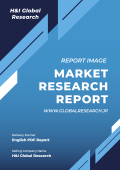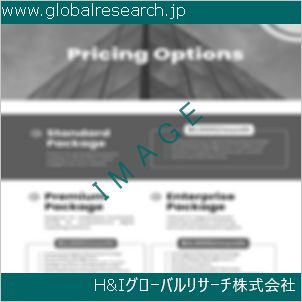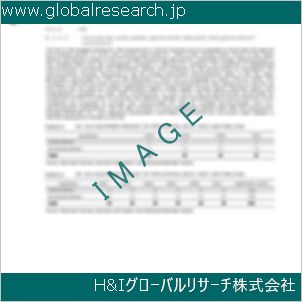目次
第1章. グローバル工業用洗浄溶剤市場レポートの範囲と方法論
1.1. 研究目的
1.2. 研究方法論
1.2.1. 予測モデル
1.2.2. デスク調査
1.2.3. トップダウンとボトムアップアプローチ
1.3. 研究属性
1.4. 研究の範囲
1.4.1. 市場定義
1.4.2. 市場セグメンテーション
1.5. 研究の仮定
1.5.1. 包含と除外
1.5.2. 制限事項
1.5.3. 調査対象期間
第2章 執行要約
2.1. CEO/CXOの視点
2.2. 戦略的洞察
2.3. ESG分析
2.4. 主要な発見
第3章 グローバル工業用洗浄溶剤市場動向分析
3.1. グローバル工業用洗浄溶剤市場を形作る市場要因(2024–2035)
3.2. 成長要因
3.2.1. 環境に優しい低VOC洗浄剤の需要増加
3.2.2. 産業製造プロセスの複雑化
3.2.3. REACHおよびGHS準拠溶剤の採用を促す規制圧力
3.3. 制約
3.3.1. バイオベースおよびグリーン溶剤のイノベーションに伴う高コスト
3.3.2. ハロゲン含有溶剤の安全性懸念と潜在的な毒性
3.4. 機会
3.4.1. ハイブリッドおよび半水溶性配合物の登場
3.4.2. 新興国における受託製造と産業自動化の拡大
第4章 グローバル工業用洗浄溶剤産業分析
4.1. ポーターの5つの力モデル
4.1.1. 購入者の交渉力
4.1.2. 供給者の交渉力
4.1.3. 新規参入の脅威
4.1.4. 代替品の脅威
4.1.5. 競合企業の競争
4.2. ポーターの5つの力予測モデル(2024–2035)
4.3. PESTEL分析
4.3.1. 政治
4.3.2. 経済的
4.3.3. 社会
4.3.4. 技術的
4.3.5. 環境
4.3.6. 法的
4.4. 主要な投資機会
4.5. 主要な成功戦略(2025年)
4.6. 市場シェア分析(2024–2025)
4.7. グローバル価格分析と動向(2025年)
4.8. 分析家の推奨事項と結論
第5章. グローバル工業用洗浄溶剤市場規模と予測(溶剤タイプ別)2025–2035
5.1. 市場概要
5.2. ハロゲン化溶剤
5.2.1. 主要国別市場規模推計と予測(2024–2035)
5.2.2. 地域別市場規模分析、2025–2035
5.3. 非ハロゲン系溶剤
5.3.1. 主要国別市場規模推計と予測(2024年~2035年)
5.3.2. 地域別市場規模分析、2025–2035
5.4. バイオベース溶剤
5.4.1. 主要国別内訳推計と予測(2024~2035年)
5.4.2. 地域別市場規模分析、2025–2035
第6章. グローバル工業用洗浄溶剤市場規模と予測(用途別)、2025–2035
6.1. 市場概要
6.2. 金属洗浄
6.2.1. 主要国別市場規模推計と予測(2024~2035年)
6.2.2. 地域別市場規模分析(2025年~2035年)
6.3. 電子機器洗浄
6.4. 精密洗浄
6.5. 医薬品洗浄
6.6. 工業用メンテナンスと修理
第7章. グローバル工業用洗浄溶剤市場規模と予測(最終用途産業別)2025–2035
7.1. 製造業
7.2. 自動車
7.3. 電子機器
7.4. 航空宇宙
7.5. 医薬品
第8章 グローバル工業用洗浄溶剤市場規模と予測(販売チャネル別)2025–2035
8.1. 直接販売
8.2. 卸売業者および販売代理店
8.3. オンラインプラットフォーム
第9章. グローバル工業用洗浄溶剤市場規模および予測(製剤別)2025–2035
9.1. 完成品ソリューション
9.2. 濃縮液
9.3. 半水溶性製剤
第10章. グローバル工業用洗浄溶剤市場規模と地域別予測(2025~2035年)
10.1. 地域別市場概要
10.2. 主要なリーダー企業と新興国
10.3. 北米
10.3.1. アメリカ合衆国
10.3.1.1. 溶剤タイプ別市場規模と予測(2025~2035年)
10.3.1.2. 用途別市場規模と予測(2025年~2035年)
10.3.2. カナダ
10.3.2.1. 溶剤タイプ別市場規模と予測(2025年~2035年)
10.3.2.2. 用途別市場規模と予測(2025年~2035年)
10.4. ヨーロッパ
10.4.1. イギリス
10.4.2. ドイツ
10.4.3. フランス
10.4.4. スペイン
10.4.5. イタリア
10.4.6. ヨーロッパその他
10.5. アジア太平洋
10.5.1. 中国
10.5.2. インド
10.5.3. 日本
10.5.4. オーストラリア
10.5.5. 大韓民国
10.5.6. アジア太平洋地域その他
10.6. ラテンアメリカ
10.6.1. ブラジル
10.6.2. メキシコ
10.7. 中東・アフリカ
10.7.1. アラブ首長国連邦
10.7.2. サウジアラビア
10.7.3. 南アフリカ
10.7.4. 中東・アフリカその他の地域
第11章 競合分析
11.1. 主要な市場戦略
11.2. BASF SE
11.2.1. 当社概要
11.2.2. 主要な経営陣
11.2.3. 会社の概要
11.2.4. 財務実績(データ入手状況により異なります)
11.2.5. 製品/サービスポートフォリオ
11.2.6. 最近の動向
11.2.7. 市場戦略
11.2.8. SWOT分析
11.3. ハリバートン・カンパニー
11.4. クロダ・インターナショナル・プラシッド
11.5. シュルンベルジェ・リミテッド
11.6. シェブロン・フィリップス・ケミカル・カンパニー
11.7. インパクト・フルイド・ソリューションズ
11.8. トリカン・ウェル・サービス・リミテッド
11.9. ベイカー・ヒューズ・カンパニー
11.10. M&D インダストリーズ・オブ・ルイジアナ株式会社
11.11. オビン・グループ
11.12. クラリアントAG
11.13. ソルベイ・SA
11.14. ハンツマン・コーポレーション
11.15. ダウ・ケミカル・カンパニー
11.16. ケミラ・オイジー
11.12. クラリアントAG
表の一覧
表1. グローバル工業用洗浄溶剤市場、レポートの範囲
表2. グローバル工業用洗浄溶剤市場の見積もりおよび予測(地域別)2024–2035
表3. グローバル工業用洗浄溶剤市場規模推計と予測(溶剤タイプ別)2024–2035
表4. グローバル工業用洗浄溶剤市場規模推計および予測(用途別)2024–2035
表5. グローバル工業用洗浄溶剤市場規模予測(最終用途産業別)2024–2035
表6. グローバル工業用洗浄溶剤市場規模予測(2024年~2035年)-販売チャネル別
表7. グローバル工業用洗浄溶剤市場規模予測(2024–2035年)
表8. 米国市場推定値と予測、2024–2035
表9. カナダ市場推定値と予測、2024–2035
表10. イギリス市場規模推計と予測(2024–2035年)
表11. ドイツ市場推定値と予測、2024–2035
表12. フランス市場の見積もりおよび予測、2024–2035
表13. スペイン市場の見積もりおよび予測、2024–2035
表14. イタリア市場の見積もりおよび予測、2024–2035
表15. 欧州その他の地域市場推定値と予測、2024–2035
表16. 中国市場の見積もりおよび予測、2024–2035
表17. インド市場の見積もりおよび予測、2024–2035
表18. 日本市場の見積もりおよび予測、2024–2035
表19. オーストラリア市場の見積もりおよび予測、2024–2035
表20. 韓国市場の見積もりおよび予測、2024–2035
表21. ブラジル市場の見積もりおよび予測、2024–2035
表22. メキシコ市場の見積もりおよび予測、2024–2035
表23. アラブ首長国連邦(UAE)市場推定値と予測、2024–2035
表24. サウジアラビア市場推定値と予測、2024–2035
表25. 南アフリカ市場の見積もりおよび予測、2024–2035
図表一覧
図1. グローバル工業用洗浄溶剤市場、調査方法論
図2. 市場推定手法
図3. 市場規模推計方法と予測手法
図4. グローバル工業用洗浄溶剤市場、2025年の主要動向
図5. 2024~2035年の市場成長見通し
図6. ポーターの5つの力モデル
図7. PESTEL分析
図8. バリューチェーン分析
図9. 工業用洗浄溶剤市場(溶剤タイプ別)、2025年と2035年
図10. 工業用洗浄溶剤市場(用途別)、2025年と2035年
図11. 工業用洗浄溶剤市場(最終用途産業別)、2025年と2035年
図12. 工業用洗浄溶剤市場(配合別)、2025年と2035年
図13. 北米市場見通し、2025年および2035年
図14. 欧州市場見通し、2025年と2035年
図15. アジア太平洋地域市場見通し、2025年と2035年
図16. ラテンアメリカ市場見通し、2025年と2035年
図17. 中東・アフリカ市場動向、2025年と2035年
図18. グローバル企業市場シェア分析(2025年)
Chapter 1. Global Industrial Cleaning Solvents Market Report Scope & Methodology
1.1. Research Objective
1.2. Research Methodology
1.2.1. Forecast Model
1.2.2. Desk Research
1.2.3. Top-Down and Bottom-Up Approach
1.3. Research Attributes
1.4. Scope of the Study
1.4.1. Market Definition
1.4.2. Market Segmentation
1.5. Research Assumption
1.5.1. Inclusion & Exclusion
1.5.2. Limitations
1.5.3. Years Considered for the Study
Chapter 2. Executive Summary
2.1. CEO/CXO Standpoint
2.2. Strategic Insights
2.3. ESG Analysis
2.4. Key Findings
Chapter 3. Global Industrial Cleaning Solvents Market Forces Analysis
3.1. Market Forces Shaping The Global Industrial Cleaning Solvents Market (2024–2035)
3.2. Drivers
3.2.1. Rising demand for eco-friendly and low-VOC cleaning solutions
3.2.2. Increasing complexity in industrial manufacturing processes
3.2.3. Regulatory pressure to adopt REACH and GHS-compliant solvents
3.3. Restraints
3.3.1. High cost associated with bio-based and green solvent innovations
3.3.2. Safety concerns and potential toxicity of halogenated solvents
3.4. Opportunities
3.4.1. Emergence of hybrid and semi-aqueous formulations
3.4.2. Rising contract manufacturing and industrial automation in emerging economies
Chapter 4. Global Industrial Cleaning Solvents Industry Analysis
4.1. Porter’s 5 Forces Model
4.1.1. Bargaining Power of Buyers
4.1.2. Bargaining Power of Suppliers
4.1.3. Threat of New Entrants
4.1.4. Threat of Substitutes
4.1.5. Competitive Rivalry
4.2. Porter’s 5 Force Forecast Model (2024–2035)
4.3. PESTEL Analysis
4.3.1. Political
4.3.2. Economic
4.3.3. Social
4.3.4. Technological
4.3.5. Environmental
4.3.6. Legal
4.4. Top Investment Opportunities
4.5. Top Winning Strategies (2025)
4.6. Market Share Analysis (2024–2025)
4.7. Global Pricing Analysis and Trends 2025
4.8. Analyst Recommendation & Conclusion
Chapter 5. Global Industrial Cleaning Solvents Market Size & Forecasts by Solvent Type 2025–2035
5.1. Market Overview
5.2. Halogenated Solvents
5.2.1. Top Countries Breakdown Estimates & Forecasts, 2024–2035
5.2.2. Market Size Analysis, by Region, 2025–2035
5.3. Non-Halogenated Solvents
5.3.1. Top Countries Breakdown Estimates & Forecasts, 2024–2035
5.3.2. Market Size Analysis, by Region, 2025–2035
5.4. Bio-Based Solvents
5.4.1. Top Countries Breakdown Estimates & Forecasts, 2024–2035
5.4.2. Market Size Analysis, by Region, 2025–2035
Chapter 6. Global Industrial Cleaning Solvents Market Size & Forecasts by Application 2025–2035
6.1. Market Overview
6.2. Metal Cleaning
6.2.1. Top Countries Breakdown Estimates & Forecasts, 2024–2035
6.2.2. Market Size Analysis, by Region, 2025–2035
6.3. Electronics Cleaning
6.4. Precision Cleaning
6.5. Pharmaceutical Cleaning
6.6. Industrial Maintenance and Repair
Chapter 7. Global Industrial Cleaning Solvents Market Size & Forecasts by End-Use Industry 2025–2035
7.1. Manufacturing
7.2. Automotive
7.3. Electronics
7.4. Aerospace
7.5. Pharmaceuticals
Chapter 8. Global Industrial Cleaning Solvents Market Size & Forecasts by Distribution Channel 2025–2035
8.1. Direct Sales
8.2. Distributors and Wholesalers
8.3. Online Platforms
Chapter 9. Global Industrial Cleaning Solvents Market Size & Forecasts by Formulation 2025–2035
9.1. Ready-to-Use Solutions
9.2. Concentrates
9.3. Semi-aqueous Formulations
Chapter 10. Global Industrial Cleaning Solvents Market Size & Forecasts by Region 2025–2035
10.1. Regional Market Snapshot
10.2. Top Leading & Emerging Countries
10.3. North America
10.3.1. U.S.
10.3.1.1. Solvent Type Breakdown Size & Forecasts, 2025–2035
10.3.1.2. Application Breakdown Size & Forecasts, 2025–2035
10.3.2. Canada
10.3.2.1. Solvent Type Breakdown Size & Forecasts, 2025–2035
10.3.2.2. Application Breakdown Size & Forecasts, 2025–2035
10.4. Europe
10.4.1. UK
10.4.2. Germany
10.4.3. France
10.4.4. Spain
10.4.5. Italy
10.4.6. Rest of Europe
10.5. Asia Pacific
10.5.1. China
10.5.2. India
10.5.3. Japan
10.5.4. Australia
10.5.5. South Korea
10.5.6. Rest of Asia Pacific
10.6. Latin America
10.6.1. Brazil
10.6.2. Mexico
10.7. Middle East & Africa
10.7.1. UAE
10.7.2. Saudi Arabia
10.7.3. South Africa
10.7.4. Rest of Middle East & Africa
Chapter 11. Competitive Intelligence
11.1. Top Market Strategies
11.2. BASF SE
11.2.1. Company Overview
11.2.2. Key Executives
11.2.3. Company Snapshot
11.2.4. Financial Performance (Subject to Data Availability)
11.2.5. Product/Services Portfolio
11.2.6. Recent Development
11.2.7. Market Strategies
11.2.8. SWOT Analysis
11.3. Halliburton Company
11.4. Croda International Plc.
11.5. Schlumberger Limited
11.6. Chevron Phillips Chemical Company
11.7. Impact Fluid Solutions
11.8. Trican Well Service Ltd.
11.9. Baker Hughes Company
11.10. M&D Industries Of Louisiana, Inc.
11.11. Aubin Group
11.12. Clariant AG
11.13. Solvay SA
11.14. Huntsman Corporation
11.15. Dow Chemical Company
11.16. Kemira Oyj
❖ 免責事項 ❖
http://www.globalresearch.jp/disclaimer












